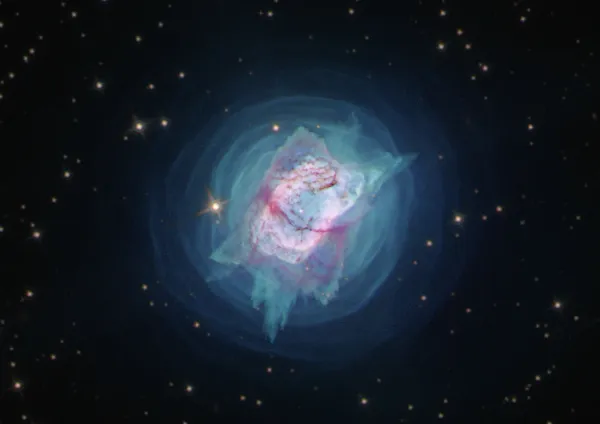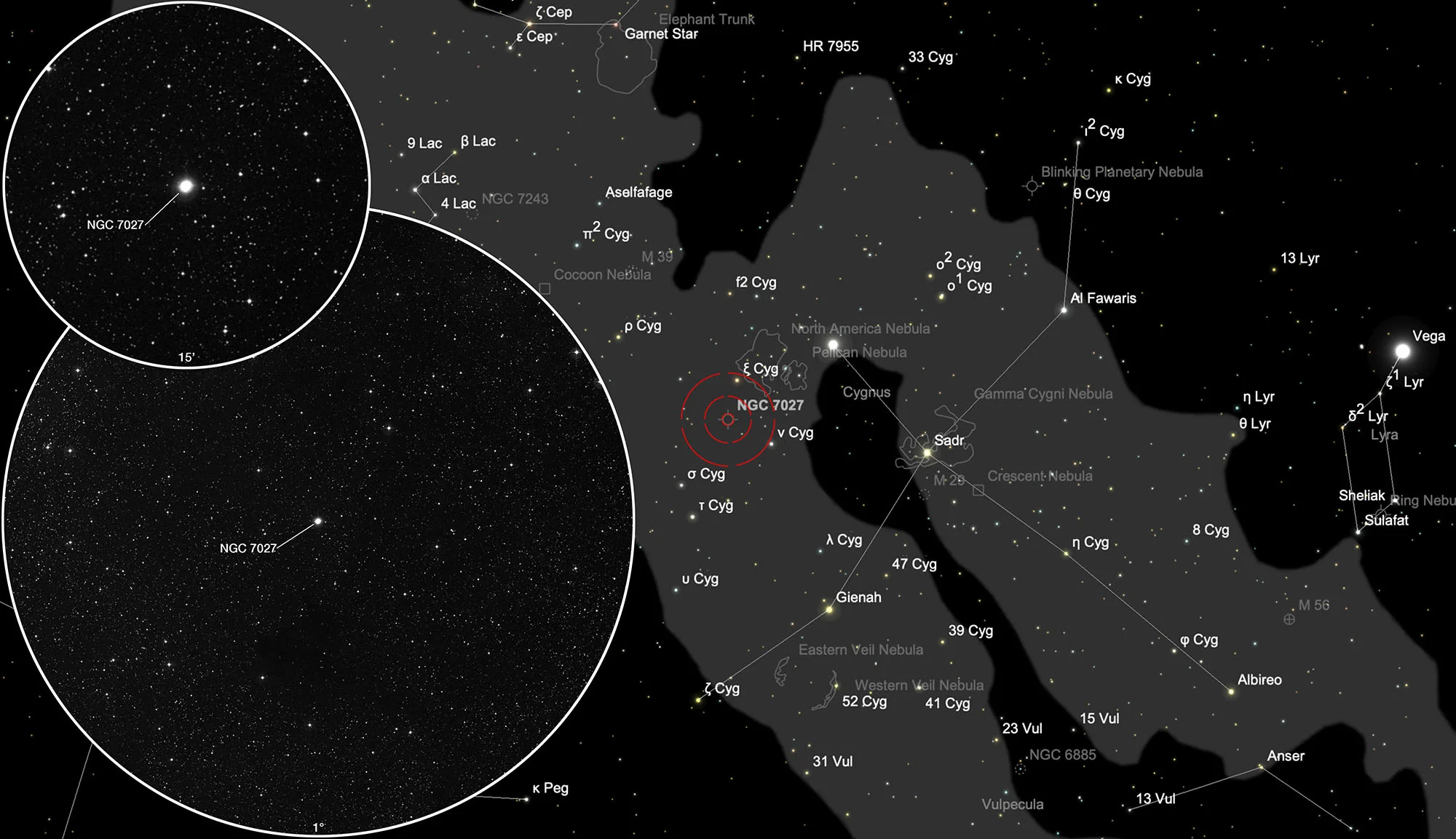Planetary Nebula NGC 7027

History
NGC 7027 was discovered by French astronomer Édouard Stephan in 1878 and independently by British astronomer Thomas Webb on 14 November 1879. J. L. E. Dreyer described it in his «New General Catalogue of Nebulae and Clusters of Stars» published in 1888 as a stellar-appearing planetary nebula of magnitude 8.5. [196]
Physical Properties

NGC 7027 is an end-of-life star in transition to a planetary nebula. Most of the nuclear fuel has been used up. A combination of stellar pulsations and radiation pressure extruded the atmosphere and formed an extended envelope around the star. During this time, the star was losing material very rapidly. What remains is a very hot star with a surface temperature of over 200'000 K. It could also be a binary star system in a close orbit. The increase in ultraviolet radiation as the star heats up first breaks down the molecules in the shell and then ionizes the atoms that make them up. This transition phase is very short, maybe less than 1000 years. The distance to Earth is about 3000 light years. [347, 348]
| Designations | PN G084.9-03.4: NGC 7027, PK 84-03.1, ARO 40, Sh 2-113, VV 261, VV' 543 |
| Right Ascension (J2000.0) | 21h 07m 02s |
| Declination (J2000.0) | +42° 14' 10" |
| Dimensions | 14." (optical), 15." (radio) |
| Distance | 0.94 kpc |
| Radial Velocity | +8.8 ± 0.6 km/s |
| Expansion Velocity | 21.5 (O-III) 23.5 (N-II) km/s |
| C-Star Designations | AG +42 1976, AG82 421, BD +41 4004, GCRV 13282, HD 201272, PLX 5083, SAO 50463 |
| C-Star Magnitude | V: 16.25 |
| Discoverer | WEBB 1879 |
Finder Chart
The planetary nebula NGC 7027 is located in the constellation Cygnus. On 7 August it is in opposition to the Sun and crosses the meridian at local midnight. The best observing time is April to January, when the PN is highest in the night sky.
